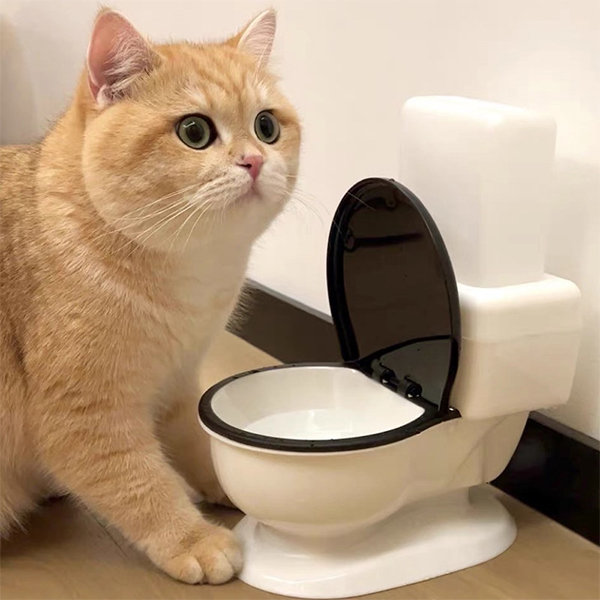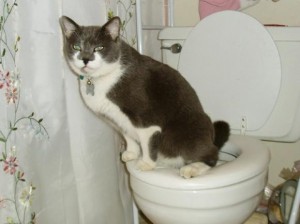We've noticed this article relating to Can You Flush Dog and Cat Poo Down the Toilet? directly below on the net and concluded it made perfect sense to talk about it with you on my blog.

When it involves dealing with waste, particularly animal waste, lots of people usually turn to the practical choice of flushing it down the bathroom. Nevertheless, this apparently simple option can have severe repercussions for the atmosphere and public health. In this write-up, we'll discover why flushing pet waste down the bathroom is a bad concept and offer alternate techniques for correct disposal.
Intro
Proper waste disposal is important for maintaining environmental sustainability and public health. While it might appear harmless to purge animal waste down the bathroom, it can bring about various problems, both for the environment and human wellness.
Risks of flushing pet waste
Ecological influence
Flushing animal waste introduces dangerous bacteria and pathogens right into rivers, which can adversely impact aquatic environments. These pathogens can infect water resources and injury aquatic life, interfering with fragile environments.
Public health issues
Animal waste has dangerous bacteria such as E. coli and Salmonella, which can posture serious health and wellness threats to humans. Flushing pet waste down the toilet can pollute water products, bring about the spread of diseases and infections.
Alternatives to flushing
Rather than flushing pet waste down the toilet, there are a number of alternate disposal approaches that are extra eco-friendly and sanitary.
Composting
Composting pet waste is an eco-friendly way to get rid of it. By composting, raw material is broken down right into nutrient-rich dirt, which can be utilized to fertilize gardens and plants.
Landfill disposal
Dealing with pet waste in a garbage dump is an additional choice. get more info While not as eco-friendly as composting, it is a much safer option to flushing, as it prevents the contamination of water resources.
Animal waste disposal systems
There are customized pet dog garbage disposal systems offered that securely and hygienically take care of animal waste. These systems usually use enzymes to break down waste and eliminate odors.
Steps to appropriate animal garbage disposal
To ensure proper disposal of animal waste, follow these steps:
Scooping and getting waste
Regularly scoop and bag animal waste making use of biodegradable bags. This avoids waste from contaminating the environment.
Using marked waste containers
Dispose of bagged animal waste in designated waste bins, such as garden compost containers or land fill bins. Stay clear of flushing it down the commode whatsoever prices.
Cleaning litter boxes and pet dog areas on a regular basis
Frequently tidy litter boxes and pet dog locations to stop the build-up of waste and germs. Usage pet-safe cleansing items to maintain health.
Benefits of correct disposal techniques
Taking on appropriate disposal techniques for pet waste provides numerous benefits:
Minimized environmental pollution
Proper disposal techniques decrease the threat of environmental pollution, protecting waterways and ecosystems from contamination
Reduced threat of water contamination.
By preventing flushing pet waste down the commode, the threat of water contamination is considerably minimized, guarding public health.
Improved cleanliness and health
Correct disposal approaches advertise far better sanitation and hygiene, creating a much safer atmosphere for both humans and animals.
Conclusion
In conclusion, purging animal waste down the commode is unsafe to the atmosphere and public health. By embracing alternative disposal techniques and complying with appropriate waste management techniques, we can lessen the unfavorable impact of pet waste and contribute to a cleaner, much healthier world.
Why You Should Never Flush Cat Poop Down the Toilet
A rose by any other name might smell as sweet, but not all poop is created equal. Toilets, and our sewage systems, are designed for human excrement, not animal waste. It might seem like it couldn’t hurt to toss cat feces into the loo, but it’s not a good idea to flush cat poop in the toilet.
First and foremost, assuming your cat uses a litter box, any waste is going to have litter on it. And even the smallest amount of litter can wreak havoc on plumbing.
Over time, small amounts build up, filling up your septic system. Most litter sold today is clumping; it is made from a type of clay that hardens when it gets wet. Ever tried to scrape old clumps from the bottom of a litter box? You know just how cement-hard it can get!
Now imagine just a small clump of that stuck in your pipes. A simple de-clogger like Drano isn’t going to cut it. And that means it’s going to cost you big time to fix it.
For an amusing, graphic tale of what happens when you flush too much litter down the toilet all at once, take a few minutes to read Gene Weingarten’s 2017 Washington Post column “So that’s what happens when you flush cat litter down the toilet.”
Parasitic Contamination
Believe it or not, your healthy kitty may be harboring a nasty parasite. Only cats excrete Toxoplasma in their feces. Yet it rarely causes serious health issues in the cats that are infected. Most people will be fine too if infected. Only pregnant women and people with compromised immune systems are at risk. (If you’ve ever heard how women who are expecting are excused from litter cleaning duty, Toxoplasma is why.)
But other animals may have a problem if infected with the parasite. And human water treatment systems aren’t designed to handle it. As a result, the systems don’t remove the parasite before discharging wastewater into local waterways. Fish, shellfish, and other marine life — otters in particular — are susceptible to toxoplasma. If exposed, most will end up with brain damage and many will die.
Depending on the species of fish, they may end up on someone’s fish hook and, ultimately on someone’s dinner plate. If that someone has a chronic illness, they’re at risk.
Skip the Toilet Training
We know there are folks out there who like to toilet train their cats. And we give them props, it takes a lot of work. But thanks to the toxoplasma, it’s not a good idea.
Leave the toilet to the humans, and accept your future litter cleaning duty.

Frequently tidy litter boxes and pet dog locations to stop the build-up of waste and germs. Usage pet-safe cleansing items to maintain health.
Benefits of correct disposal techniques
Taking on appropriate disposal techniques for pet waste provides numerous benefits:
Minimized environmental pollution
Proper disposal techniques decrease the threat of environmental pollution, protecting waterways and ecosystems from contamination
Reduced threat of water contamination.
By preventing flushing pet waste down the commode, the threat of water contamination is considerably minimized, guarding public health.
Improved cleanliness and health
Correct disposal approaches advertise far better sanitation and hygiene, creating a much safer atmosphere for both humans and animals.
Conclusion
In conclusion, purging animal waste down the commode is unsafe to the atmosphere and public health. By embracing alternative disposal techniques and complying with appropriate waste management techniques, we can lessen the unfavorable impact of pet waste and contribute to a cleaner, much healthier world.
Why You Should Never Flush Cat Poop Down the Toilet
A rose by any other name might smell as sweet, but not all poop is created equal. Toilets, and our sewage systems, are designed for human excrement, not animal waste. It might seem like it couldn’t hurt to toss cat feces into the loo, but it’s not a good idea to flush cat poop in the toilet.
First and foremost, assuming your cat uses a litter box, any waste is going to have litter on it. And even the smallest amount of litter can wreak havoc on plumbing.
Over time, small amounts build up, filling up your septic system. Most litter sold today is clumping; it is made from a type of clay that hardens when it gets wet. Ever tried to scrape old clumps from the bottom of a litter box? You know just how cement-hard it can get!
Now imagine just a small clump of that stuck in your pipes. A simple de-clogger like Drano isn’t going to cut it. And that means it’s going to cost you big time to fix it.
For an amusing, graphic tale of what happens when you flush too much litter down the toilet all at once, take a few minutes to read Gene Weingarten’s 2017 Washington Post column “So that’s what happens when you flush cat litter down the toilet.”
Parasitic Contamination
Believe it or not, your healthy kitty may be harboring a nasty parasite. Only cats excrete Toxoplasma in their feces. Yet it rarely causes serious health issues in the cats that are infected. Most people will be fine too if infected. Only pregnant women and people with compromised immune systems are at risk. (If you’ve ever heard how women who are expecting are excused from litter cleaning duty, Toxoplasma is why.)
But other animals may have a problem if infected with the parasite. And human water treatment systems aren’t designed to handle it. As a result, the systems don’t remove the parasite before discharging wastewater into local waterways. Fish, shellfish, and other marine life — otters in particular — are susceptible to toxoplasma. If exposed, most will end up with brain damage and many will die.
Depending on the species of fish, they may end up on someone’s fish hook and, ultimately on someone’s dinner plate. If that someone has a chronic illness, they’re at risk.
Skip the Toilet Training
We know there are folks out there who like to toilet train their cats. And we give them props, it takes a lot of work. But thanks to the toxoplasma, it’s not a good idea.
Leave the toilet to the humans, and accept your future litter cleaning duty.

As a serious reader about Don't Flush Your Pets Poo Down The Loo, Vet Warns, I imagined sharing that article was a smart idea. Those who liked our page kindly do not forget to share it. We take joy in reading our article about Don't Flush Your Pets Poo Down The Loo, Vet Warns.
Click Here